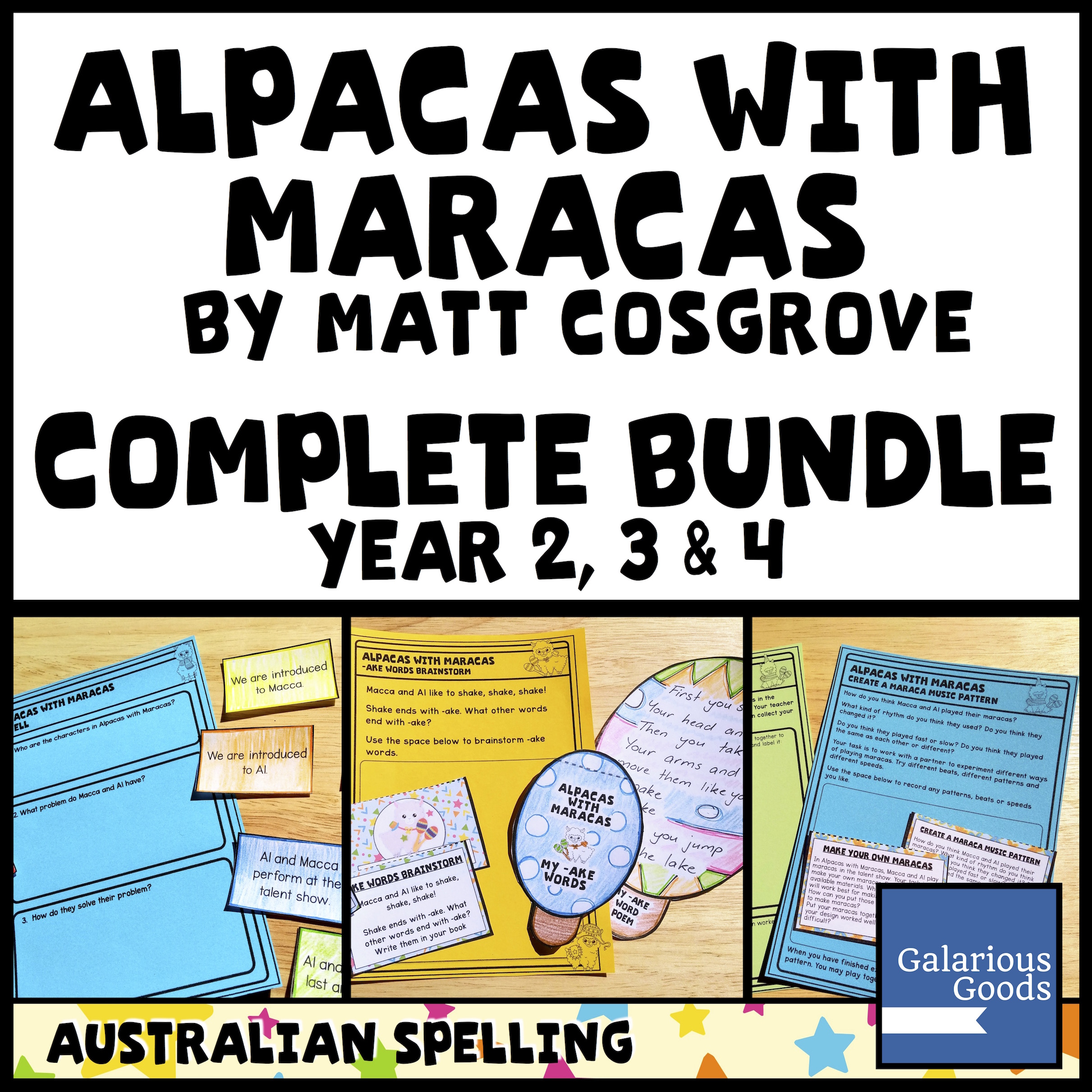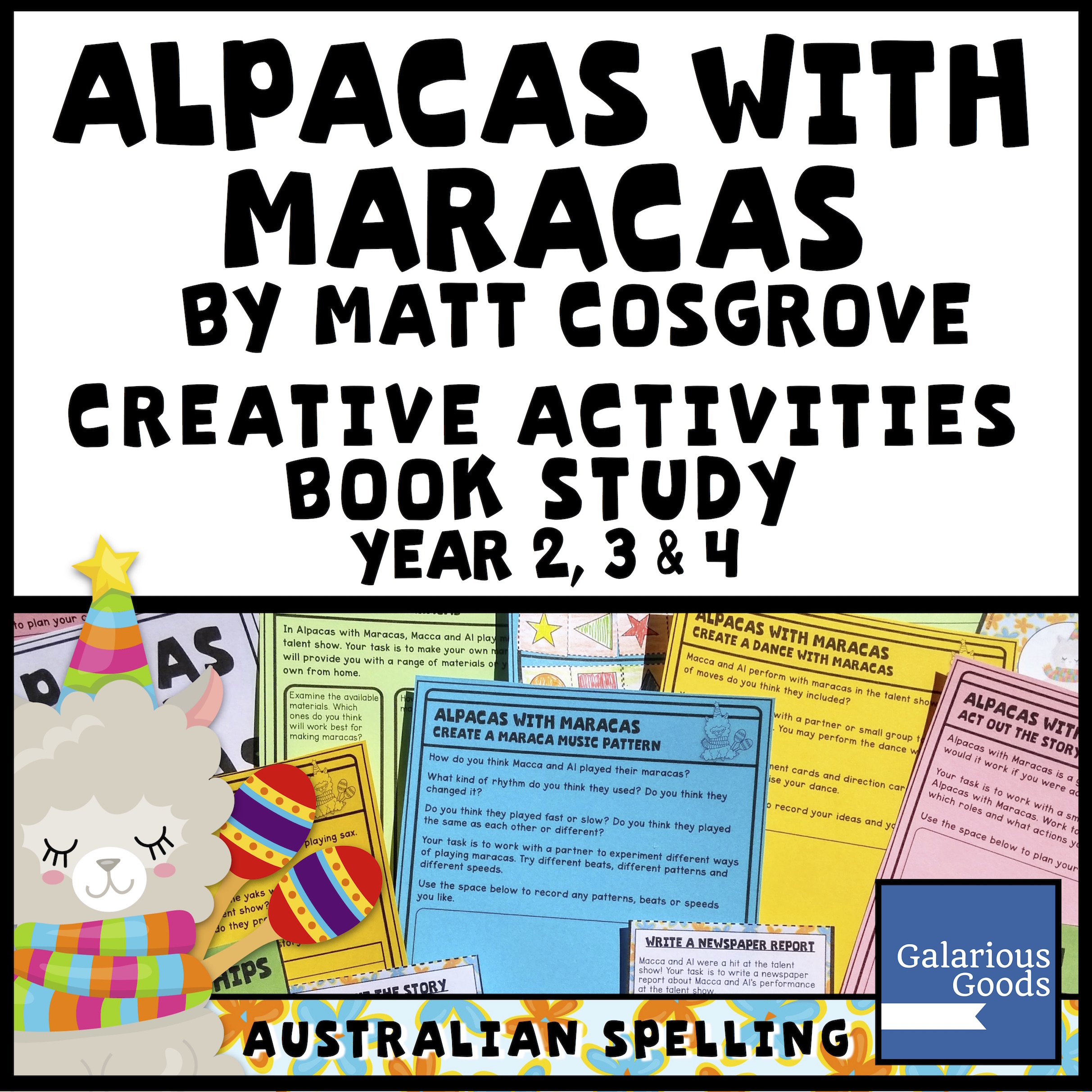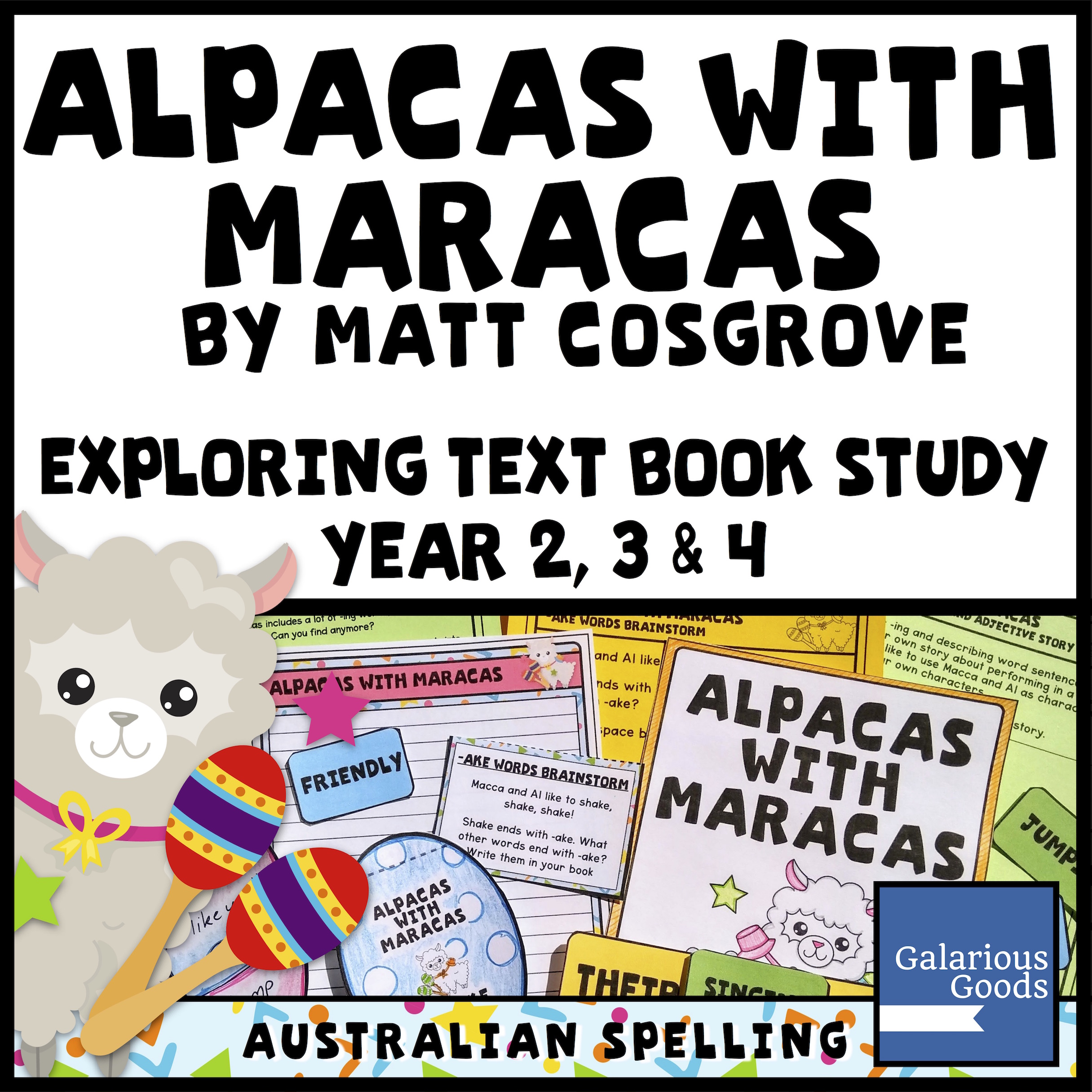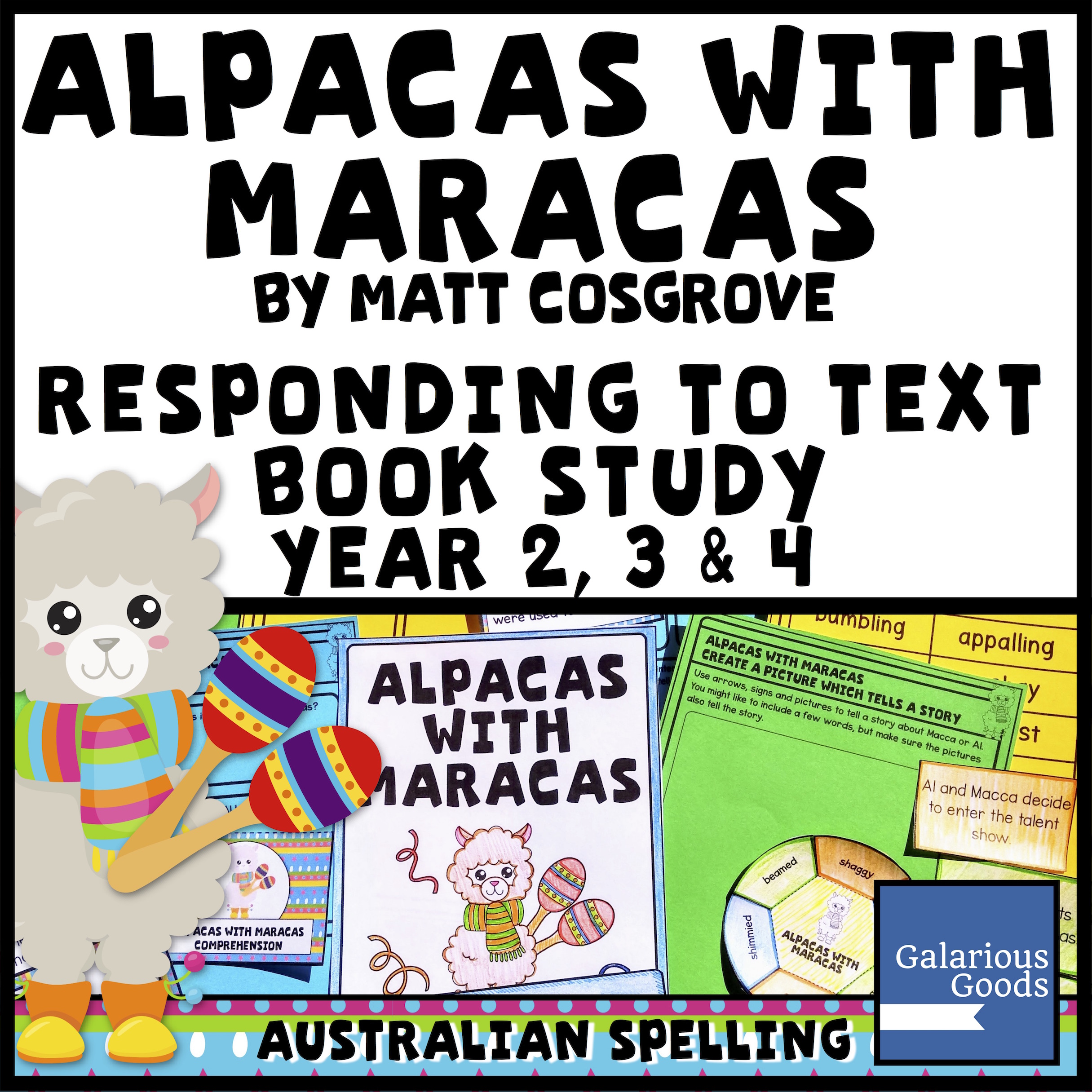5 Reasons We Love Macca (the Alpaca)
/Have you met Macca?
He’s an alpaca! And the star of the great Macca the Alpaca picture book series by Matt Cosgrove. These books - four at the moment, including a Christmas book - have jumped into popularity (and many homes and classrooms) since the first was released in 2017.
We love Macca - and we think he’s great for the classroom. And here’s a few reasons why . . .
1. There is so much to learn from the illustrations
While picture book illustrations are often important to get the most out of a story, in the Macca books they’re super important. Often the word we need to finish the excellent rhyming structure is there, in the illustrations, not to mention the important image clues which help readers decode and comprehend what is happening on the page.
You can use this while exploring why illustrations are so important to tell the full story in a picture book. Students can explore matching text and illustrations to make sure they have the best combination or explore how the story might change if an illustration was changed.
Students can also explore the style of illustration, looking at how lines are used to show movement and how different fonts are used in the text. Again, they can question what would happen if it was different - without the lines and the different fonts, would the story feel the same to the reader?
2. The books are funny
There’s this lovely slightly frantic and slightly absurd humour in the Macca books, whether it comes through the joy of how Macca will outsmart the bully llama or the inevitability of the Christmas crackers creating chaos and creative present gifting.
In the classroom, it would be interesting to look at why the books are funny - is it seeing alpacas doing things that alpacas don’t usually do (or do they?) or does the humour come as the author builds anticipation for what is going to come next.
Students can also explore writing their own Macca stories. What would happen if Macca went travelling? What would happen if Macca opened a store? What would happen if he had to take those nephews and niece to school . . . .?
3. Macca is Nice
We have our fair share of selfish (but lovable) characters in picture books (looking at you Pig the Pug and Mothball the Wombat!), but Macca is just nice. He wants to defeat the bully, but does it with brains and kindness. He wants to win the competition, but is happy just to dance with the winners. He really, really wants to give his friends the best Christmas ever.
Looking at Macca’s qualities is a great classroom activities - and a great way to compare the different Macca books. You can create a comparison table for the class to fill in as they read the different books, or different groups could read each book and describe all of Macca’s great qualities to share with the rest of the class.
Students can also explore what lessons we can learn from Macca. What does he do that makes him a good role model? And how can we apply those lessons in our own life. This is a great way to explore qualities like giving to others, being creative and being persistent.
4. The Macca books encourage our students to move
Encourage them to move? But they’re books! Students sit down to read and listen to books!
But the Macca books are full of movement - and you can use this in your classroom. Macca uses all kinds of movement to defeat Harmer. He and Al try so many different ways to share a talent before dancing with their maracas. And those naughty little Alpacas move in all the wrong ways.
This is perfect if you would like to integrate dance into your literacy lessons. Students can explore different kinds of movements and what they might look like as dance steps. And then they can put those movements together to create their own dance sequences.
Students can also integrate this with physical education, designing an obstacle course which Macca and Harmer might compete over - and then setting it up and trying it out themselves!
5. Who doesn’t love alpacas?! (and the other creatures)
Alpacas are all the rage at the moment - and it’s not hard to see why. The Macca version has lovely big eyes and eyelashes, those great ears, and - thanks to the magic of books - he’s not going to spit at us! We also meet a number of other creatures in the Macca books - either directly (a llama and yaks) or indirectly (Al’s pirhanas or the cuddly sloth).
Students can research these animals and compare the real life versions with their book counterparts. They can explore why we really love some animals while other animals remain unloved. And they can use Macca and his friends as characters in other work - what happens when you have an alpaca as part of a maths problem or a sloth as part of a music lesson?

















